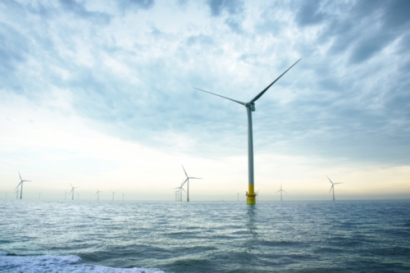
Offshore wind projects have fewer space restrictions and better capacity. According to studies, offshore harnessing offers higher wind speeds because water bodies have no or negligible obstructive structures. Thus, the flow of harnessing processes and electricity generation capacity is higher for offshore wind harnessing setups.
Therefore, the offshore wind market is set for higher growth rates in the upcoming forecast period. The offshore wind market also benefits from regulatory policies and a changed outlook of governments towards renewable energy sources.
Under sustainable development goals of 2030, the adoption of wind energy harnessing has gained traction. More and more countries are setting up wind harnessing farms. Among these countries with long coastlines and islands are leading in offshore wind farms set up. Wind energy market players are also making conscious efforts towards the set up of offshore wind energy farms.
Given these industry trends and major drivers of offshore wind market growth, the market will project a high CAGR in the future years. As of 2020, the global offshore wind power generation has grown to 35.3 GW. The initiative to expand this power generation capacity is happening on a global scale.
While the setup of many offshore wind power generation projects is complete, other projects are in the pipeline with the planning phase in progress. Therefore, it is no surprise that the offshore wind power market will see a double-digit growth rate that inches towards 20 percent in the forecast years.
Market Segmentation
The offshore wind market divides into different industrial segments depending on different criteria. The primary criteria of segmentation are by application and end-user verticals. By application, the offshore wind market share divides into towers, turbines, batteries, nacelles, and electrical infrastructure. By end-user, the offshore wind market divides into shallow water, deep water, and transitional water. Taking different market segments into consideration is crucial for offshore wind market research.
Regional Analysis
The offshore wind market disperses over different regions of the earth depending on presence and revenue generation. The key regions of the offshore wind market are North America, Asia Pacific, Europe, South America, the Middle East, and Africa.
The study of different regional trends is necessary for the offshore wind market outlook. The largest market share by region will belong to Europe in the forecast years. The North American region comes in second place by market share. APAC region will also make a significant contribution to the growth of the offshore wind market.
Industry news
Key players in the sector take up many recent developments. The offshore wind energy market is a promising and emerging one with great potential. The key players are taking up mergers and acquisitions and new projects to expand the scope of the market. For example, Siemens Gamesa Renewable Energy SA has cracked deals to supply turbines for high-power offshore wind projects in 2021.
Leading Companies
Some of the leading companies in the global offshore wind market include General Electric (US), Ørsted A/S (Denmark), Dong Energy A/S (Denmark), Suzlon energy Limited (India), EEW GROUP (Germany), MHI Vestas Offshore Wind (Denmark), Siemens Gamesa Renewable Energy, SA (Germany), ABB (Switzerland), ENERCON GmbH (Germany), Senvion SA (Luxembourg), Engie (France), Doosan Heavy Industries & Construction (South Korea), Goldwind Wind Energy GmbH (China), to mention a few.
For more information: Market Research Future

